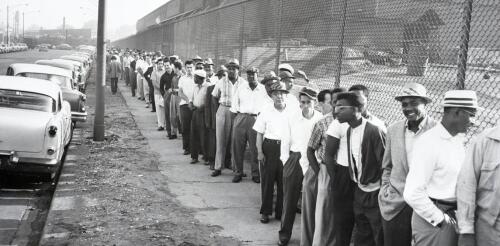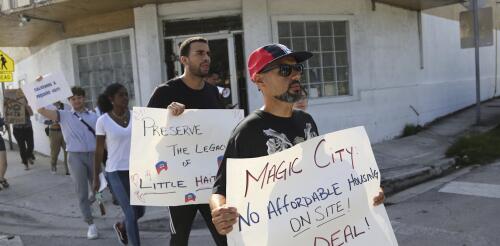Real estate
It was midday on a Saturday, and Simonetta led me from the open front door of her home in southeast Chicago to her sitting room and settled next to her husband, Christopher, on the couch. In the 1980s, Christopher had worked a few blocks away at U.S. Steel South Works, earning three times the minimum wage with a high school diploma – more than enough to buy a house near Simonetta’s parents before their first baby arrived. Like their neighbors in southeast Chicago, Simonetta and Christopher’s expectations for work and home were set by the steel industry. Between 1875 and 1990, the employment offered here by eight steel mills created a dense network of working-class neighborhoods on the marshlands 15 miles south of downtown Chicago. For the tens of thousands of employees who lived and worked in this region, steel was a rare breed of work: unionized, blue-collar jobs that paid middle-class wages, with starting salaries in the 1960s at nearly three times the minim...
It took a global pandemic to convince American businesses that their employees could work productively from home, or a favorite coffee shop. Post-COVID-19, employers are struggling to find the right balance of in-office and remote work. However, hybrid work is likely here to stay, at least for a segment of workers. This shift isn’t just changing lifestyles – it’s also affecting commercial spaces. Office vacancy rates post-COVID-19 shot up almost overnight, and they remain near 20% nationwide, the highest rate since 1979 as tenants downsize in place or relocate. This workspace surplus is putting pressure on existing development loans and leading to defaults or creative refinancing in a market already plagued by higher interest rates. Office tenants with deeper pockets have gravitated to newer and larger buildings with more amenities, often referred to as Class A or “trophy” buildings. Older Class B and C buildings, which often have fewer amenities o...
Miami’s Little Haiti has been an immigrant community for decades. Its streets are lined with small homes and colorful shops that cater to the neighborhood, a predominantly Afro-Caribbean population with a median household income well below Miami’s. But Little Haiti’s character may be changing. A $1 billion real estate development called the Magic City Innovation District is planned in the neighborhood, with luxury high-rise apartments, high-end shops and glass office towers. Little Haiti’s streets have been lined with murals and mom-and-pop shops for generations, but that’s changing. Joe Raedle/Getty Images The developers emphasize their commitment to sustainability. But high-end real estate investments like this raise property values, pushing up property taxes and the cost of living for surrounding neighborhoods. The potential effect on shops and homeowners and on t...


